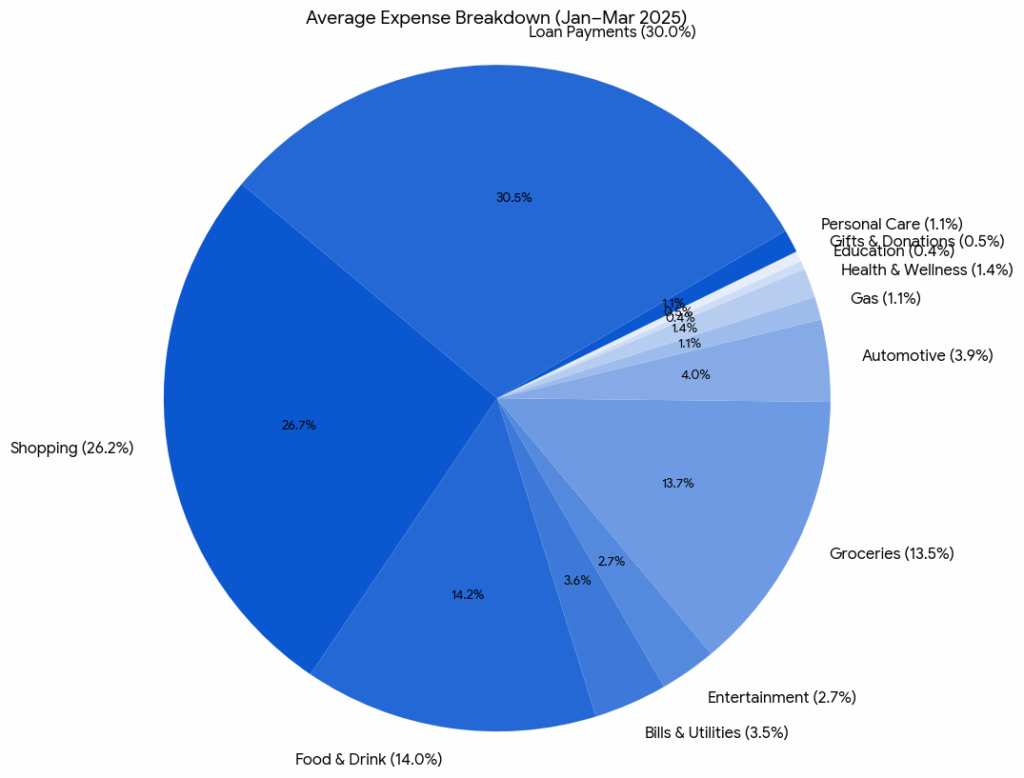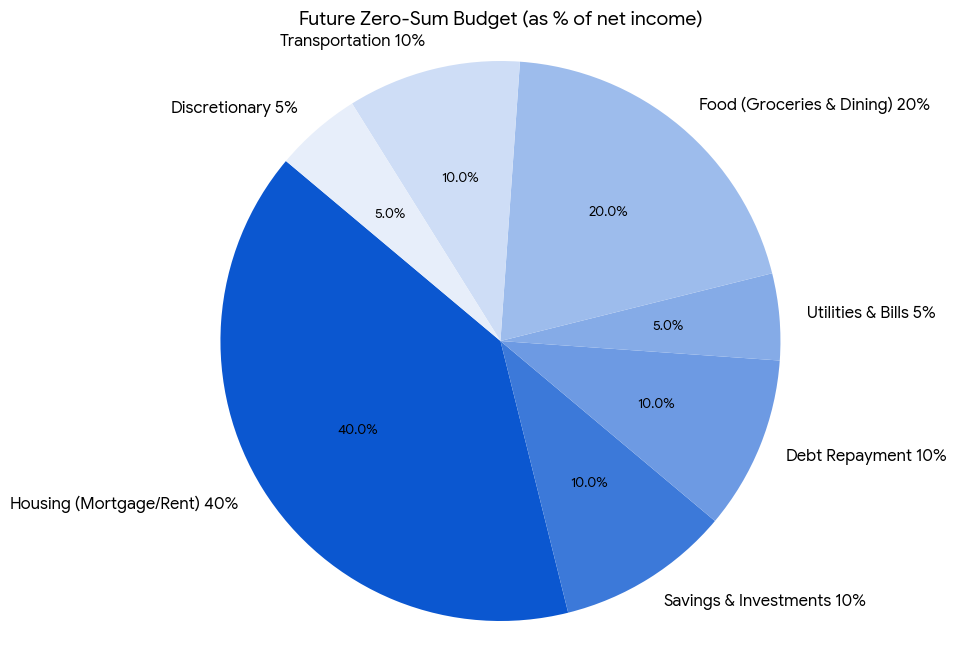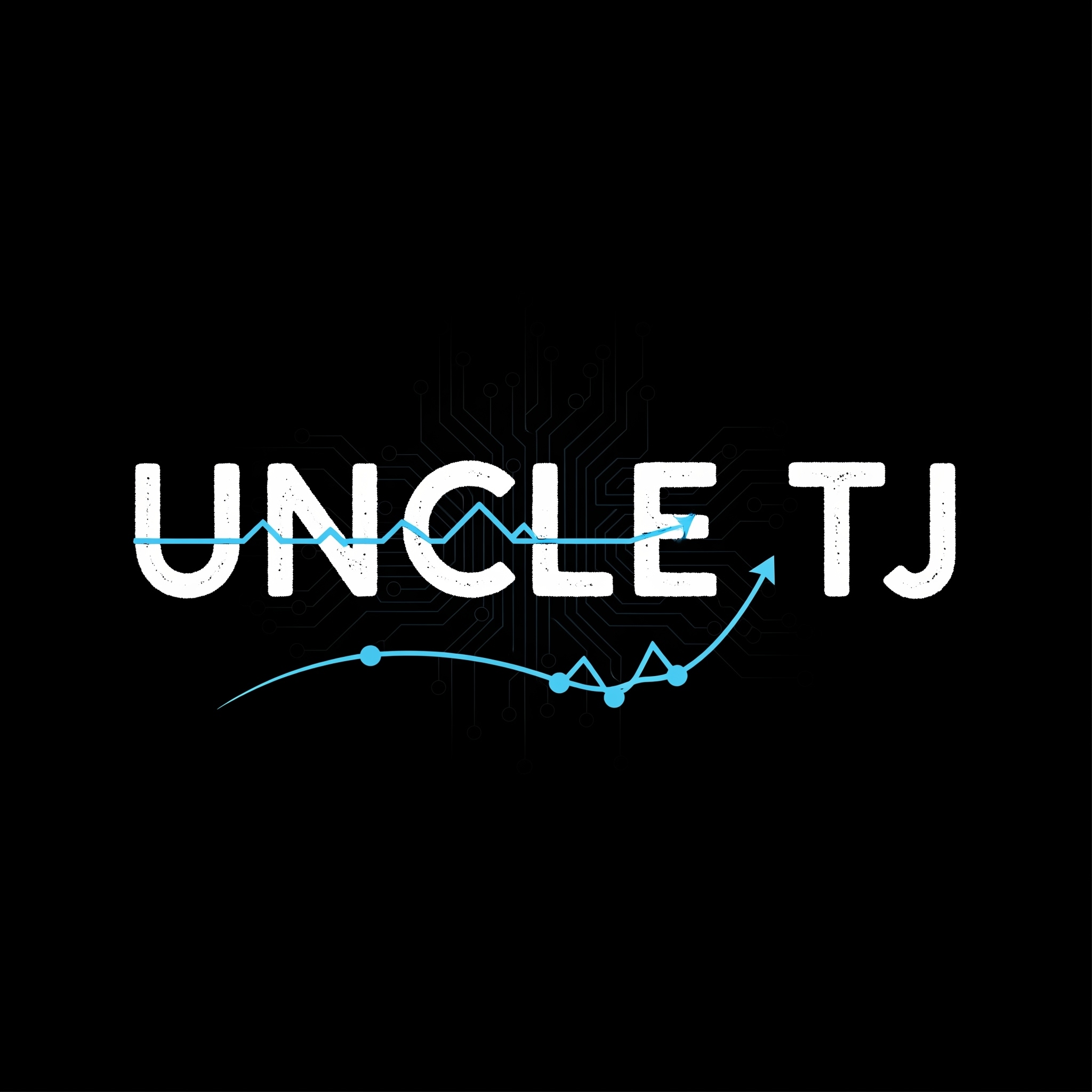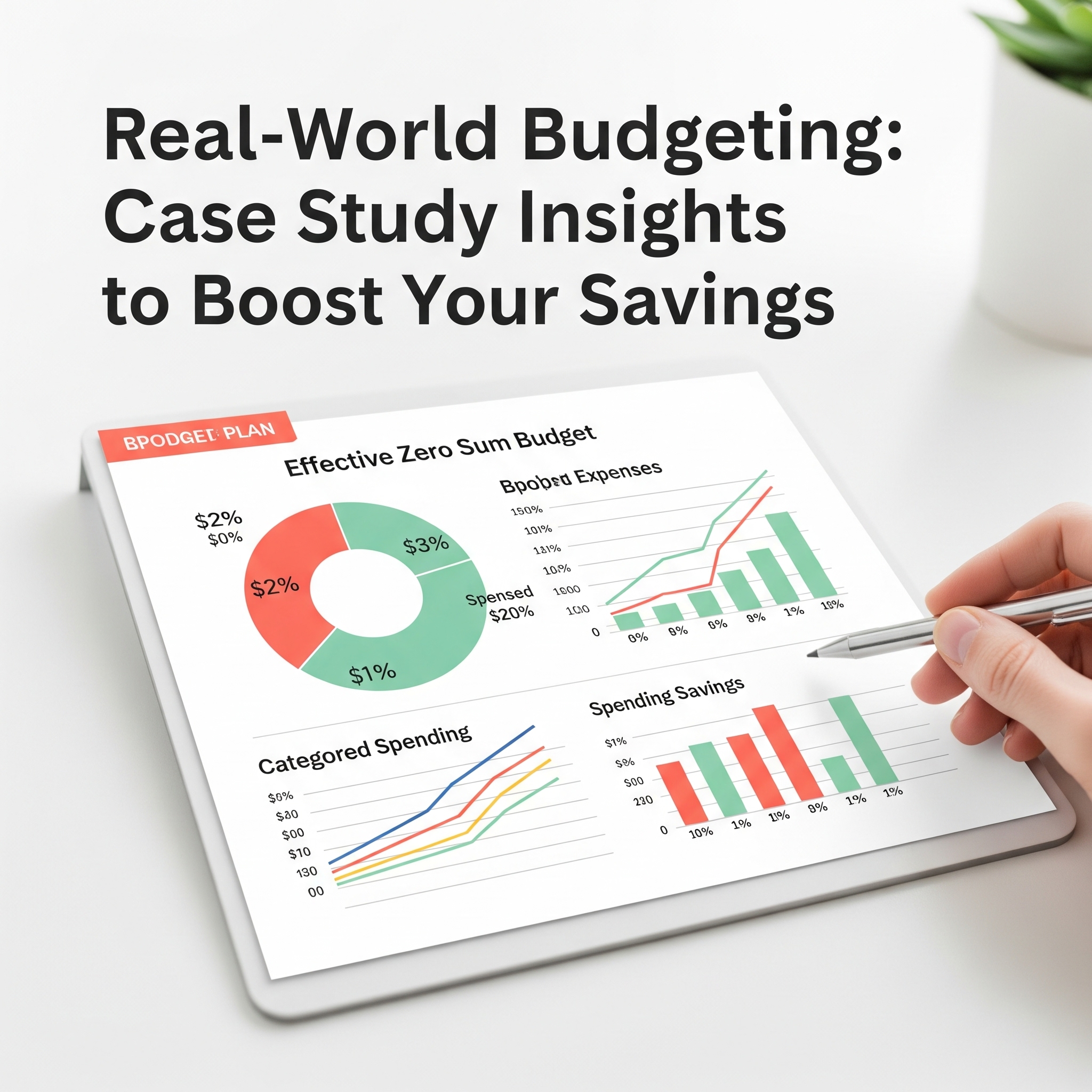Understanding where your money goes is the first step toward financial freedom. In this case study, we’ll walk through three months of real-world transactions, highlight key insights, and offer actionable strategies to improve your budget without feeling deprived.
Historical Budget Analysis
Below is a summary of net income versus expenses from January through March 2025:
| Month | Income | Expenses | Net Change |
|---|---|---|---|
| January 2025 | $7,589.91 | $7,803.55 | –$213.64 |
| February 2025 | $7,378.56 | $7,627.65 | –$249.09 |
| March 2025 | $7,271.07 | $7,840.66 | –$569.59 |
Even with consistent paychecks, expenses outpaced income each month, creating a small but steady deficit.
Categorized Spending Trends
Breaking down expenses by category reveals where most dollars flow:
| Category | Jan 2025 | Feb 2025 | Mar 2025 |
|---|---|---|---|
| Shopping | $2,235 | $1,875 | $1,981 |
| Food & Drink | $1,113 | $988 | $1,146 |
| Groceries | $1,109 | $983 | $1,056 |
| Loan Payments | $2,112 | $2,396 | $2,468 |
| Bills & Utilities | $237 | $281 | $294 |
| Entertainment | $185 | $241 | $204 |
| Automotive & Gas | $300 | $418 | $455 |
| Health & Wellness | $93 | $120 | $101 |
| Personal Care | $87 | $75 | $97 |
| Gifts & Donations | $28 | $52 | $38 |
| Education | $103 | $0 | $0 |

Key observations:
- Shopping, Groceries, and Dining make up nearly 50% of expenses.
- Fixed debt payments (credit cards, loans) account for 30% of outflows.
- Variable categories like entertainment and personal care offer room for adjustment.
Zero-Sum Budget Proposal
To stop running a deficit and start directing every dollar purposefully, here’s a 100% allocation of your monthly income:
| Category | Percentage |
|---|---|
| Housing (Mortgage / Rent) | 40% |
| Savings & Investments | 10% |
| Debt Repayment (Non-Housing) | 10% |
| Utilities & Bills | 5% |
| Food (Groceries + Dining) | 20% |
| Transportation (Auto + Gas) | 10% |
| Discretionary (Shopping, Etc.) | 5% |
With this framework, you’ll cover essentials, build savings, and cap discretionary spending—zero dollars left unassigned.

5 Effortless Ways to Save
- Automate $50–$100 per paycheck into a high-yield savings account.
- Swap delivery orders for restaurant pickup to cut fees.
- Pause or cancel one underused subscription (streaming, apps).
- Delay non-essential purchases 48 hours—impulses often fade.
- Match spending categories to your highest-reward credit card.
These small tweaks preserve your lifestyle while boosting savings invisibly.
Additional Opportunities
- Subscription Audit: Review recurring charges every quarter.
- Cashback & Rewards: Link grocery and dining to cards with bonus categories.
- Debt Refinancing: Explore lower-rate consolidation for loans or cards.
- Side Hustle Ideas: Monetize your skills on freelancing platforms.
- Budgeting Apps: Use real-time trackers to monitor variable spending.
Conclusion
A clear, data-driven analysis transforms your budget from reactive to proactive. By realigning spending categories, automating savings, and trimming non-essentials, you can eliminate deficits and gain financial confidence. Start implementing one change today, track your progress, and watch your balance—and peace of mind—grow.


Leave a Reply